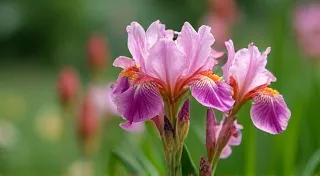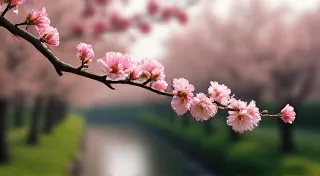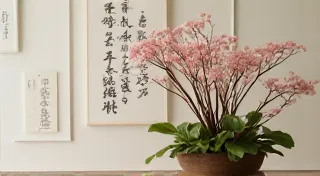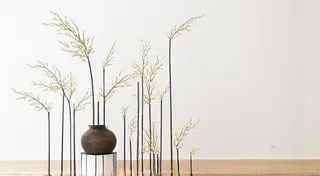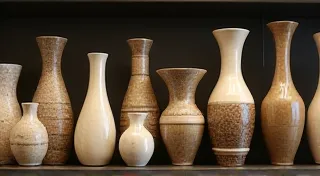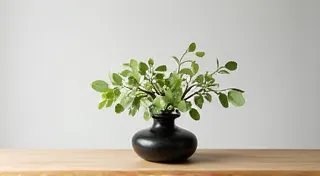Ikebana in Modern Homes: Contemporary Arrangements
Ikebana, the ancient Japanese art of flower arranging, is often associated with traditional settings and formal ceremonies. However, its principles of balance, harmony, and mindful observation can be beautifully adapted to modern homes, creating striking and serene displays that complement contemporary interior design. This article explores how to incorporate Ikebana into modern spaces with contemporary and minimalist arrangements.
Understanding the Core Principles – Then Breaking Them (Gently!)
Before diving into contemporary adaptations, it's important to grasp the fundamental principles of Ikebana. Traditional Ikebana emphasizes asymmetry, line, space (Ma), and the expression of nature’s essence. These concepts aren't just about placing flowers; they're about cultivating a mindful connection to the natural world. While respecting these foundations, modern Ikebana encourages experimentation and a looser interpretation. The art form thrives on a delicate balance between respect for tradition and a willingness to innovate – and understanding how the importance of space (Ma) contributes is key to grasping the full depth of Ikebana's philosophy.
Contemporary Ikebana: Less is More
A key element of contemporary Ikebana is often embracing minimalism. Forget overflowing vases packed with dozens of blooms. Modern arrangements frequently showcase a few carefully chosen stems, allowing each element to truly shine. This approach aligns perfectly with the clean lines and uncluttered aesthetic common in modern interiors. The careful selection of materials and the deliberate use of negative space communicate a sense of calm and sophistication, qualities that resonate strongly with the modern aesthetic.
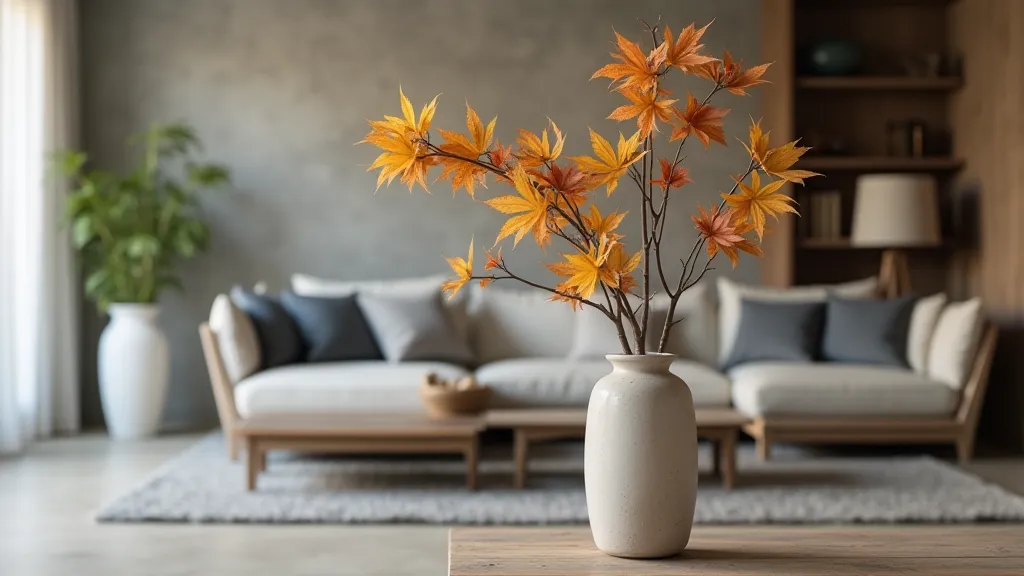
Material Choices: Beyond the Expected
While traditional Ikebana uses specific flowers and foliage, contemporary practitioners often broaden the palette. Consider incorporating:
- Dried materials: Branches, seed pods, grasses, and dried flowers add texture and a unique, aged quality. The intentional use of dried elements reflects a Japanese appreciation for wabi-sabi, finding beauty in imperfection and the passage of time.
- Unusual foliage: Think eucalyptus, ferns, or even interesting twigs. The juxtaposition of unexpected textures and colors can create a visually compelling arrangement.
- Unexpected elements: A single sculptural fruit or a carefully placed stone can add visual interest. These unexpected additions draw the eye and create a sense of mystery and intrigue.
Don't be afraid to experiment with materials that resonate with you and complement your home's decor. The journey of discovery is part of the joy of Ikebana. Consider the tools you’ll use, too. Specialized Japanese scissors can make a significant difference in the precision and finesse of your cuts; learning about essential Japanese scissors for Ikebana and how to care for them is a worthwhile endeavor for any budding practitioner.
Vase Selection: Simplicity is Key
The vase is an integral part of the arrangement. For modern Ikebana, opt for vessels that are simple and understated. Ceramic cylinders, rectangular containers, or even glass bottles with clean lines work well. The vase should enhance, not distract from, the natural beauty of the materials. Consider the color and texture of the vase, and how it will interact with the stems and foliage. A neutral-colored vase often provides the best backdrop for showcasing the unique characteristics of the materials.
Creating a Contemporary Ikebana Arrangement: A Step-by-Step Guide
- Choose your materials: Start with a limited selection – three to five stems is a good starting point.
- Consider the height and scale: The arrangement should be proportionate to the space where it will be displayed.
- Establish a focal point: This could be a particularly striking stem or a cluster of leaves.
- Utilize negative space (Ma): Don't be afraid to leave areas of the vase or the surrounding space empty. This allows the eye to rest and appreciate the individual elements. The deliberate absence is as important as the presence of the materials.
- Experiment with angles and lines: Traditional Ikebana often uses strong vertical lines. Contemporary arrangements can incorporate softer, more flowing lines. Think about how the lines create movement and guide the viewer's eye.
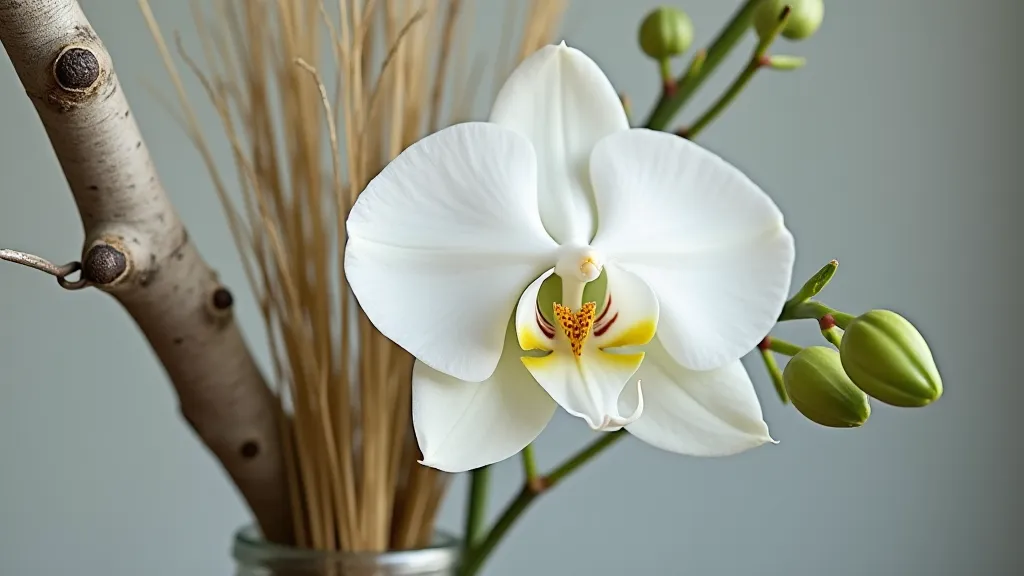
Placement in the Modern Home
Contemporary Ikebana arrangements are incredibly versatile and can be displayed in various locations within the modern home:
- Entryway: A striking arrangement can create a welcoming and elegant first impression. Consider the overall style of your entryway and choose an arrangement that complements it.
- Living room: A minimalist arrangement can add a touch of tranquility to the space. Think about the color palette of your living room and choose materials that harmonize with it.
- Dining room: A carefully placed arrangement can enhance the dining experience. Choose materials that evoke a sense of serenity and sophistication. Arrangements for special occasions can truly elevate the ambiance; exploring Ikebana for special occasions can unlock a world of creative possibilities.
- Bedroom: A calming arrangement can promote relaxation and a sense of well-being. Choose materials that have a soothing effect, such as lavender or chamomile.
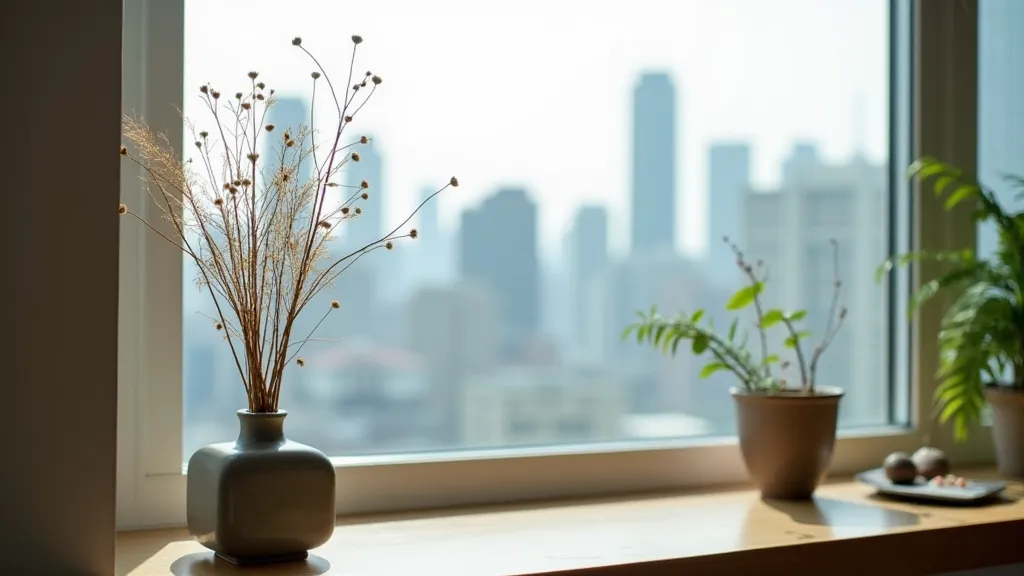
Embrace Your Creativity
Ultimately, the beauty of Ikebana lies in its ability to express your individual creativity and connection to nature. While respecting the traditional principles, don’t be afraid to experiment, break the rules (gently!), and create arrangements that reflect your personal style and enhance the beauty of your modern home. The balance between tradition and innovation is what keeps Ikebana a vibrant and evolving art form. The skillful manipulation of line and space, so crucial to the overall design, has a profound impact; delve deeper into the role of line and space in Ikebana design to truly understand the artistry involved.
